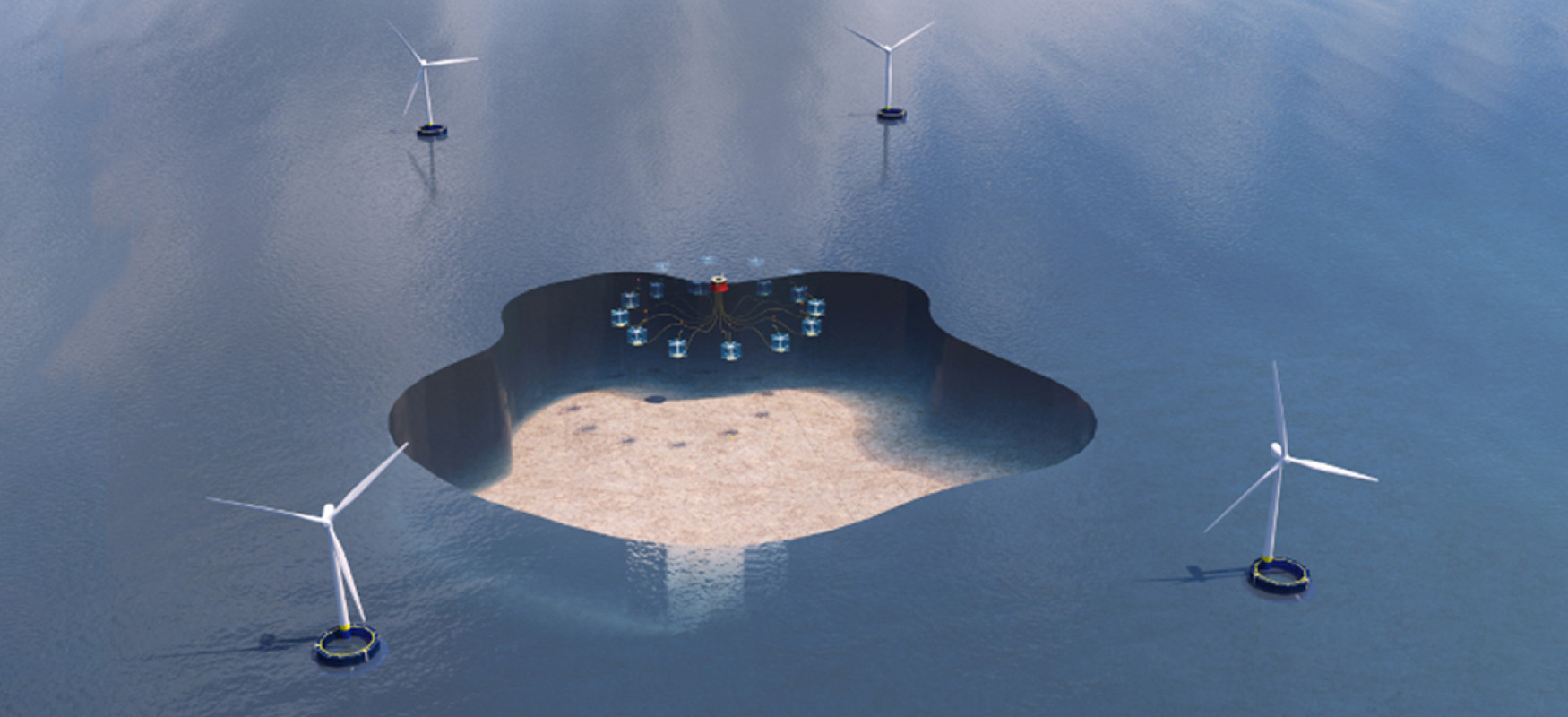Just in case you wonder, OFFWOFF is an acronym combining Offshore Floating Wind and Offshore Fish Farms.
Offshore Wind has been identified as one of the key solutions in the short and medium term to meet the need for new renewable energy both in the Nordic countries and world-wide. Similarly, aquaculture farming activities are moving out in the open sea, also increasing the need to optimize the use of marine areas. As the global population continues to grow, the demand for sustainable food becomes increasingly critical, and the oceans hold the key to increase the supply of healthy proteins.
The OFFWOFF co-location project aims to create a model, or a template even, that any developer could use to evaluate whether offshore fish farming could be implemented within an offshore floating wind farm anywhere else in the Nordic countries as well in the rest of the world. This aligns with Ocean Mission and the aim of the Sustainable Ocean Economy program to make the Nordic region a frontrunner in the development of a sustainable ocean economy.
Enabling co-existence at sea
The OFFWOFF project is a development and research project with the purpose to investigate whether co-location of floating wind power and fish farming is feasible.
The development part of the project is exclusively about how fish farming and wind farms can and must be designed in a technically practical way in order to function seamlessly, individually and together. The research will focus more on, for example, how currents and sounds, such as noise from wind turbines and mooring systems, could affect the farmed fish. Finding out how underwater currents affect movements of platforms, culture boxes, anchoring and inter-array cable networks is also critical to the co-location project.
Challenges and objectives
Offshore wind industry continues to grow at a steady pace. Questions arise regarding the optimal use of open ocean spaces and the potential for multi-use applications, combining the power generation with other industrial uses of the same maritime area.
The existence of co-location activities is one of the fundamental objectives of marine spatial planning (MSP), and multi-use can be a tool for reducing conflicts between different interests and sectors. From a societal point of view, the need for co-located concepts is urgent.
The offshore wind farms could affect fishing patterns and thus in turn affect landings. In combination with declining fish stocks, the degree of self-sufficiency could be reduced. However, when the wind farms include aquaculture, it opens up for new businesses and would also be a tool for increasing the level of self-sufficiency.
One such shared use of the ocean space is submerged fish farming, and the following are considered as the main challenges, to be addressed in this project:
Technical, operational and biological feasibility: Co-locating offshore wind farms with fish farms requires that the site specific metocean and biological conditions at the wind farm are compatible with the requirements of the fish farm and the fish species considered for farming. Further, it requires that the operational activities during installation and operation of the two farms do not create unacceptable risks to each other or threatens the fish welfare. It is therefore important to perform a site specific technical, biological, and operational assessment of the feasibility of co-location.
Mooring systems: Floating wind farm structures have complex mooring patterns and in-field seabed electrical cabling layouts which may reduce the available space for other activities within the farm perimeter. The layout of the fish farm mooring system may therefore come in conflict with the mooring lines and in-field cables, and therefore needs to be thoroughly analyzed.
Underwater Noise: The interest of regulators and other stakeholders in underwater noise and its effects on marine life is increasing. This is true both for effects of noise on single species and impact on biodiversity. A key question is if the combined noise from offshore wind- and fish farms emitted during construction and operation impacts the marine environment. Another important issue is the potential effect of underwater noise during wind farm operation on the health of farmed fish. If impacts occur, effective mitigation measures must be developed to protect aquatic life in the fish farm and adjacent areas.
Project members
Freja Offshore AB, Sweden
Freja is a joint venture between Mainstream Renewable Power and Hexicon AB, to develop, build and operate (floating) offshore wind farms in Sweden.
Learn more about Freja Offshore: www.frejaoffshore.se
Sub Farm AS, Norway
Technology developer of submersible aquaculture cage systems for fish farming.
Learn more about Sub Farm: www.subfarm.no
DHI AS, Denmark
DHI offers specialized consulting services in all types of water environments, with an emphasis on advanced application of calculation models for water-related issues in community planning.
Learn more about DHI: www.dhigroup.com
Lysekils Kommun, Sweden
Standard utskrift The Lysekil Municipality is primarily the initiator of the OFFWOFF project by gathering the project members. The municipality of Lysekil is a leader in research and operational development of maritime industries. Lysekil is also home to the Kristineberg Centre, Sweden's leading center for marine research and innovation.
Learn more about Lysekil: www.lysekil.se
ÅKP, Norway
ÅKP is a Norwegian leading provider of services in entrepreneurship, innovation and networking to facilitate complete incubator systems, cluster programs including GCE Blue Maritime Cluster and NCE Blue Legasea and more.
Learn more about ÅKB: www.aakp.no


